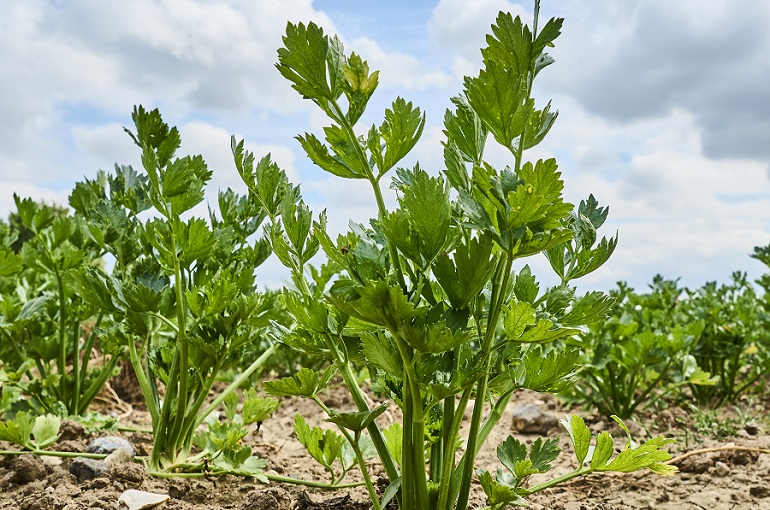Celery Weed Management

This post is also available in:
This post is also available in:
![]() Deutsch (German)
Deutsch (German) ![]() हिन्दी (Hindi)
हिन्दी (Hindi) ![]() Ελληνικά (Greek)
Ελληνικά (Greek)
Note: the following information is for Apium graveolens var. graveolens (Celery).
Due to the slow growth of celery plants (low competitive ability), weeds often pose a problem in the early developmental stages of the crop, competing with the plants for space and access to sunlight, water, and nutrients. Moreover, weeds can host crop enemies and maintain or even increase disease levels in the field. As a result, weeds, especially during the first 4 weeks after planting, can reduce the quality and quantity of the harvested product by up to 30-40%. All celery growers must have a sound weed control strategy, which may differ significantly between countries, law framework, means of production, the industry at which the product targets, etc.
In order to control the weeds more efficiently, we advise all celery farmers to adopt a more holistic approach by applying integrated weed management practices. Such techniques may include cultivation, crop rotation, stale seedbed (irrigation and pre-planting tillage), shifting the planting dates and spacing, mulching, and chemical control (herbicides).
More specifically, cultivation (manually or with machinery) is usually necessary to control the weeds both pre-and post planting. However, since celery has a shallow root system, it is essential to avoid deep cultivations (tillage). Rotate your crop with strawberries, lettuce, or broccoli that have effective weed management systems. In conventional farming, there is also the possibility of herbicide application. You are always advised to use registered (labeled) and permitted for the crop chemical products and respect the time and dose of application recommended on the label. Consult your local relevant authorities and agronomists to find the bests suited product for your crop, weeds, and field. Finally, it is advised not to use herbicides with the same mode of action multiple times to avoid the development of herbicide-resistant weeds. In some production systems, celery farmers use plastic or organic mulches to cover the part of the soil between the plant to control the weeds (no access to sunlight decreases weed seed germination).
For all these measures to be successful, the farmer should start by monitoring his/her field and recognizing the species and location of weeds. This data will help decide on the most effective type of control measures. Of course, monitoring the weed population should not only be done before planting the celeries but should continue later on and especially after the application of weed management, to evaluate its efficacy. The weed species found in a celery field and the severy of the problem they cause may vary depending on the field weed/crop history, the time of the year, and the local environmental conditions. Some common weeds of concern for celery farmers are the: little mallow (Malva perviflora), yellow nutsedge (Cyperus esculentus), redroot pigweed (Amaranthus retroflexus), johnsongrass (Sorghum halepense), bermudagrass (Cynodon decathlon), groundsel (Senecio vulgaris L.) and velvetleaf (Abutilon theophrasti).
References
- https://www.gov.nl.ca/ffa/files/agrifoods-plants-pdf-celery.pdf
- https://anrcatalog.ucanr.edu/pdf/7220.pdf
- https://edis.ifas.ufl.edu/publication/WG027
Further reading
Interesting Facts, Nutritional Value and Plant Information of Celery
How to Grow Celery in a Pot in your garden
Growing Celery for Profit – Commercial Celery Farming
Celery Soil preparation, Soil requirements, and Seeding requirements
Celery Water Requirements – How to irrigate Celery
Celery Fertilizer Requirements
Celery Stalk Blanching – How to Blanch your Celery
Celery Weed Management









































































